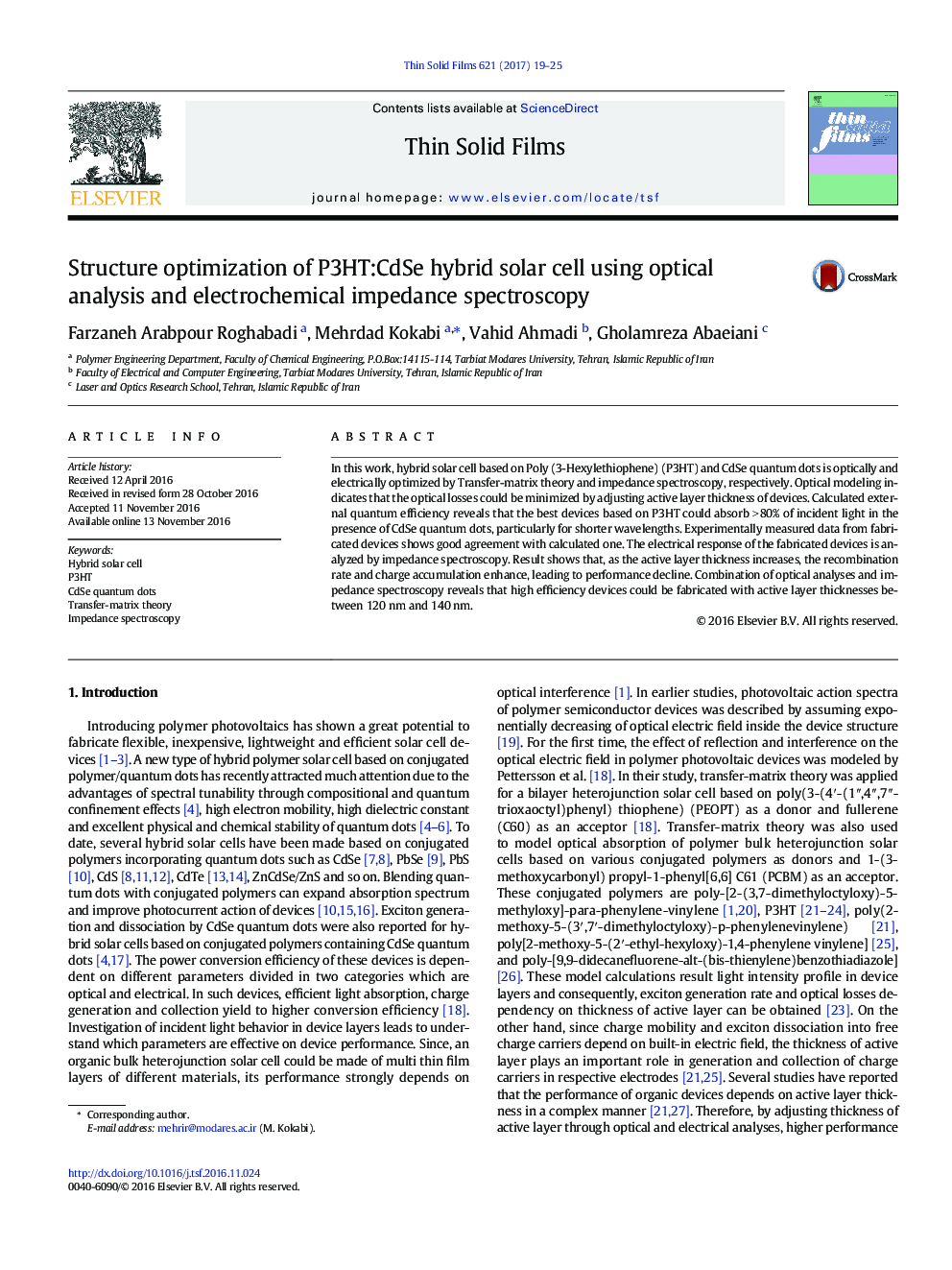| Article ID | Journal | Published Year | Pages | File Type |
|---|---|---|---|---|
| 5466409 | Thin Solid Films | 2017 | 7 Pages |
Abstract
In this work, hybrid solar cell based on Poly (3-Hexylethiophene) (P3HT) and CdSe quantum dots is optically and electrically optimized by Transfer-matrix theory and impedance spectroscopy, respectively. Optical modeling indicates that the optical losses could be minimized by adjusting active layer thickness of devices. Calculated external quantum efficiency reveals that the best devices based on P3HT could absorb >Â 80% of incident light in the presence of CdSe quantum dots, particularly for shorter wavelengths. Experimentally measured data from fabricated devices shows good agreement with calculated one. The electrical response of the fabricated devices is analyzed by impedance spectroscopy. Result shows that, as the active layer thickness increases, the recombination rate and charge accumulation enhance, leading to performance decline. Combination of optical analyses and impedance spectroscopy reveals that high efficiency devices could be fabricated with active layer thicknesses between 120Â nm and 140Â nm.
Related Topics
Physical Sciences and Engineering
Materials Science
Nanotechnology
Authors
Farzaneh Arabpour Roghabadi, Mehrdad Kokabi, Vahid Ahmadi, Gholamreza Abaeiani,
